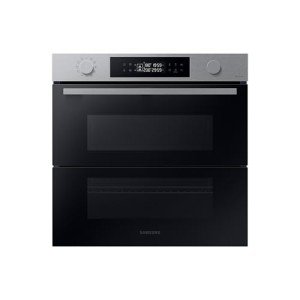The Rise of Built-In Ovens: A Seamless Approach to Modern Cooking
In contemporary cooking areas, where design looks mix effortlessly with functionality, one appliance stands apart as a true video game changer: the built-in oven. As homeowners and chefs alike continue to seek ingenious options that enhance their cooking experience, built-in ovens have actually ended up being progressively popular. This short article explores the advantages, factors to consider, and patterns surrounding built-in ovens, highlighting why they are a necessary feature in modern cooking areas.
What is a Built-In Oven?
A built-in oven is a kitchen area appliance developed to be integrated into the cabinets of a kitchen area instead of standing alone. Unlike traditional freestanding ovens, which can be moved and placed anywhere, built-in ovens can be found in different designs and sizes to fit specifically within designated areas. Readily available in single or double setups, these ovens provide a streamlined appearance that matches modern kitchen area styles.
Benefits of Built-In Ovens
1. Space-Saving Design
One of the most attractive benefits of built-in ovens is their space-saving design. By integrating the oven into kitchen cabinetry, you can maximize valuable counter and flooring area. This is especially advantageous in smaller cooking areas, where optimizing space is essential. Built-in ovens can be installed at eye level, making them more accessible and reducing the need to bend down.
2. Visual Appeal
Built-in ovens add to a sleek and cohesive kitchen style. Available in various surfaces-- such as stainless steel, black, white, and custom cabinets-- they can mix perfectly into the total decoration. This aesthetic appeal boosts the kitchen's visual harmony and raises the area, creating a modern-day and sophisticated environment.
3. Improved Functionality
Lots of built-in ovens come equipped with sophisticated cooking innovations, such as convection cooking, steam ovens, and smart features. These enhancements enable flexible cooking options, making it simpler to accomplish professional-level outcomes at home. integrated ovens for sale built-in ovens can even connect to Wi-Fi, allowing users to control the oven remotely, receive alerts, and access a variety of cooking programs and dishes.
4. Enhanced Ventilation
Since built-in ovens can be integrated with cooking area hoods and ventilation systems, they can help keep much better air quality and minimize cooking smells. This is especially substantial for those who like to prepare with fragrant spices and active ingredients, as a reliable ventilation system can keep the kitchen area comfy and inviting.
5. Modification Options
Built-in ovens use a vast array of personalization choices to match specific cooking styles and needs. From professional-grade appliances with numerous cooking modes to compact styles for smaller sized kitchen areas, homeowners can select the oven that fits their specific requirements. Lots of manufacturers likewise offer personalized front panels, allowing you to match the oven's appearance to your cabinetry for a truly merged appearance.
Factors to consider When Choosing a Built-In Oven
While built-in ovens have numerous advantages, there are essential considerations to keep in mind before buying:
1. Cost
Built-in ovens generally come with a higher price than their freestanding counterparts due to their style and installation requirements. It's crucial to element in both the expense of the oven and any additional costs connected to cabinets adjustments or installation.
2. Setup Requirements
Installing a built-in oven typically needs expert help, especially if you need to customize existing cabinets. Make sure that you consider any costs related to setup, including labor and possible cabinetry changes.
3. Size and Dimensions
Before purchasing a built-in oven, determine the designated area precisely to ensure a correct fit. Built-in ovens can be found in numerous sizes and configurations, so choosing one that lines up with your requirements and kitchen design is vital.
4. Lifestyle and Usage

Consider your cooking routines and needs when choosing a built-in oven. If you often host big events, a double oven might be more useful. On the other hand, if you have a compact kitchen, a single-wall oven might be adequate.
Patterns in Built-In Ovens
The kitchen appliance market is continuously developing, and built-in ovens are not exempt from emerging trends. Some present patterns consist of:
Smart Technology Integration: With the increase of clever home technology, built-in ovens now frequently include connectivity options. This allows users to monitor cooking progress and adjust settings via mobile apps.
Energy Efficiency: As sustainability ends up being a top priority, many makers are buying energy-efficient built-in ovens that minimize energy intake while preserving performance.
Multi-functional Designs: Built-in ovens now provide features such as air frying, sluggish cooking, and steaming, providing versatility that fulfills a large range of cooking methods.
Conclusion
Built-in ovens certainly represent an ideal blend of style, function, and convenience in today's kitchens. As more house owners select this modern-day service, the focus moves to developing a cooking area that is as aesthetically pleasing as it is practical. Whether you are building a new home or redesigning your kitchen, thinking about a built-in oven might elevate your culinary experience and transform your cooking area into a stylish and functional haven. With a selection of alternatives offered and continuous innovations in innovation, built-in ovens remain a standout option for both novice cooks and culinary lovers alike.
